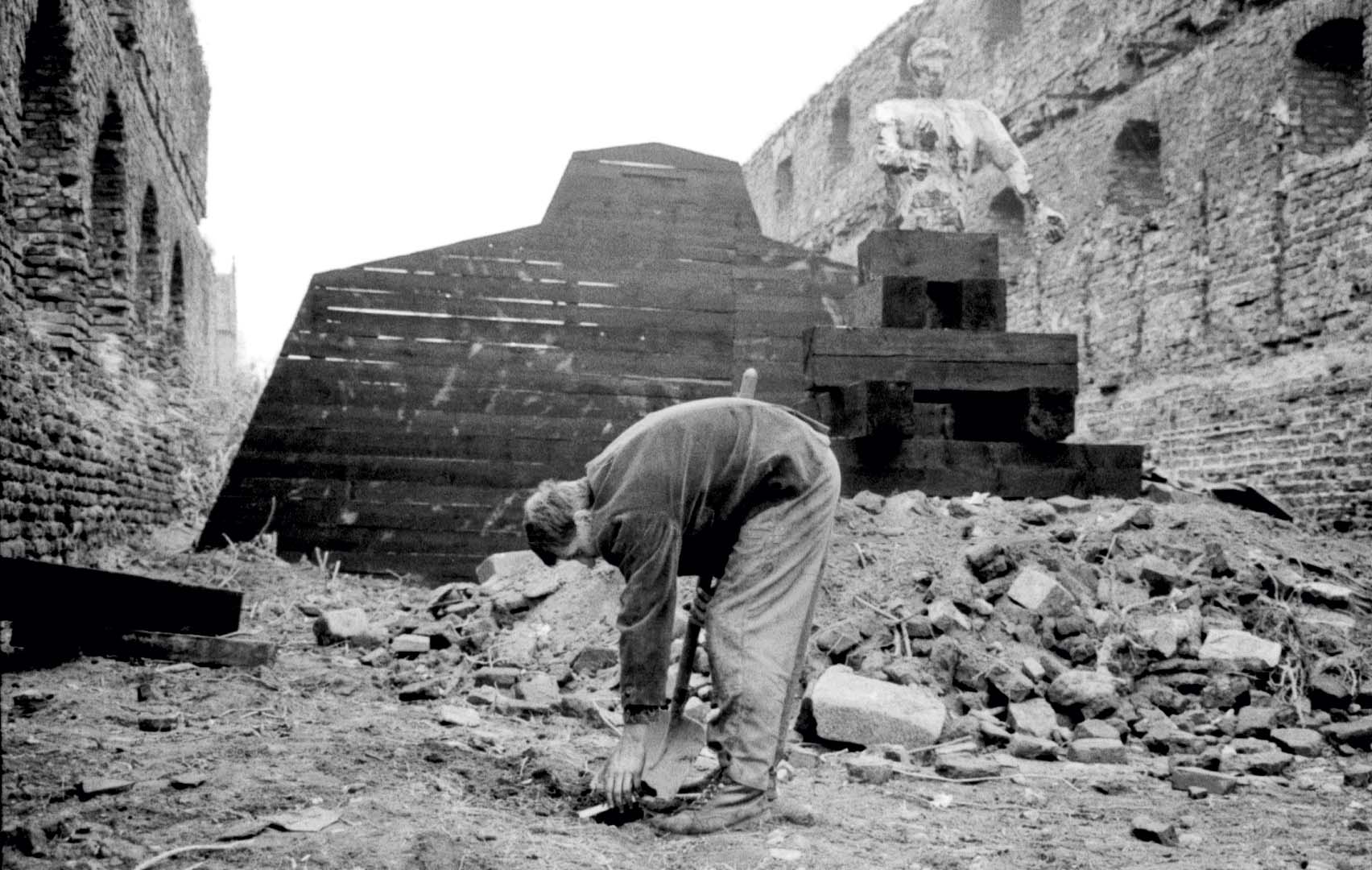Burying Books was a planned, deliberate action, inspired by Granary Island – a kind of no man’s land in a country without public space. Klaman called Granary Island ‘ex-territorial’ – a kind of space beyond the jurisdiction of power and ideology. However, he did not carry out archaeological excavations or grew nostalgic for the traces of history. Klaman inverted the archaeological activity – instead of discovering, he buried, disturbing the chronology of the layers.
Both the gesture of burying books and the accompanying Inverted Archaeology artistic manifesto seem to be crucial for Klaman’s 1980s art, but also influence his later practice – different in form and created in a completely different political and artistic and institutional context. The point is not to know for sure what happened in the past and how the past can be depicted, but to know how to disrupt the order of things, infuse them with meaning and insert oneself there without becoming history’s hostage.





